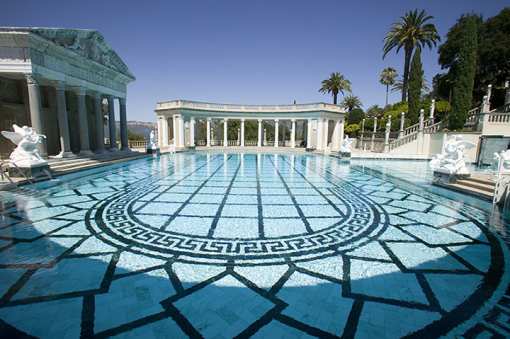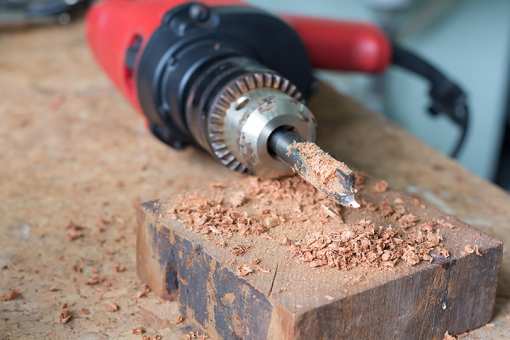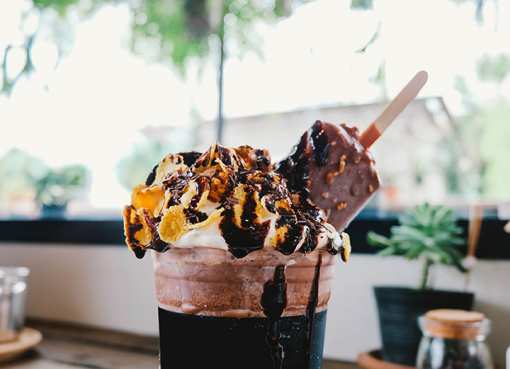History:
The 1920s were absolutely roaring at Fairplex – the inaugural Los Angeles County Fair debuted with 100,000 in attendance and C.B. Afflerbaugh was named first paid manager.
1922 – First Los Angeles County Fair held – five successful days, Oct. 17 – Oct. 21, at a cost of $63,000
1924 – C.B. Afflerbaugh become the Fair’s first paid manager, a post he held until 1960. Home Arts building was constructed and fine arts shared the exhibit hall.
1925 – Fair attendance topped the 100,000 mark for the first time and it became a September affair.
1930s – saw growth, legalized pari-mutuel wagering, WPA buildings and touched by a depression.
1930– The largest exhibit building in the world was completed at a cost of $250,000 (Expo Hall 4).
1931 – The Depression touched Pomona as it did the nation and attendance saw a drop.
1933 – Pari-mutuel wagering was legalized in California and the Fair meeting became the first in Southern California to allow fans to bet on horse racing.
1937– The government’s Works Progress Administration added construction of various buildings – the fine arts building, a new administration building, Expo Halls 5 & 6, a cafeteria (Anthony’s, later renamed Avalon).
1940s – brought reorganization, World War II and reopening of the Fair in 1948.
1940– The Los Angeles County Corporation was reorganized as the Los Angeles County Fair Association.
1941 – Jut three days after the close of the Fair, the huge agricultural building was gutted by fire. On Dec. 14, just a week after Pearl Harbor, three U.S. Army regiments occupied the grounds as first units arriving for war duty.
1942 – 1947 Grounds were used by the Army in various capacities.
1948– The Fair reopened and Thummer was introduced as official Fair mascot. Attendance topped the one million mark for the first time. Expo Hall 4, the agricultural pavilion replaced the burned structure at a cost of $750,000.
1949– Ganesha Boulevard was constructed. The Fair Association purchased 72 acres for parking lots, extending the total property to more than 400 acres.
1950s celebrated construction of landmarks Flower & Garden Pavilion, Clock Tower, Mexican Village and NHRA racetrack.
1950– The carnival was moved to its present location and a 40-foot-high arch with neon letters formed the entrance to the Fun Zone.
1952 – The Flower & Garden pavilion, Clock Tower and Mexican Village, now known as Plaza de las Américas were constructed.
1953– The NHRA held its first sanctioned event at Pomona Raceway.
1959– A tunnel connecting the grounds with the 10,000-car parking lot opposite White Avenue was completed under White Avenue.
1960s brought a new general manager and a monorail for aerial viewing of the grounds.
1961 – NHRA held its inaugural Winternationals before the largest single-day audience in the brief history of auto racing.
1962– A mile-long monorail circling the core of the grounds began operation. Storybook Farm, now known as California’s Heritage Square, was added.
1966– California Governor Pat Brown and Republication gubernatorial candidate Ronald Reagan both visited the 1966 Fair.
1970s introduced the Fair’s third Fair manager in its history.
1978– Phil Shepherd retired as general manager and was succeeded by Ralph Hinds.
1979 – 30,000 gallons of paint applied to buildings and fixtures. Seating was increased, clubhouse dining facilities were improved and expanded and nightly grandstand entertainment planned.
1980s saw growth, development and expansion.
1980 – The one-of-a kind Child Development Center opened. It is recognized as one of the top facilities of its kind in the state of California.
1983 – Ralph Hinds was appointed president and chief executive officer.
1984– Expo Hall 4 reopened after a major renovation to bring year-round business to the grounds. The name of the fairgrounds was changed to Fairplex to encourage year-round use as a show and exposition complex.
1985 – The racetrack’s half-mile track was expanded to 5/8th mile and a single-day record attendance of 177,612 was recorded Sept. 21.
1986– Racetrack grandstand and clubhouse facilities were renovated and the track was renamed Fairplex Park. A 184-space recreational vehicle park opened on White Avenue.
1988– Satellite wagering was offered at Fairplex Park.
1989– A $27 million bond issued marked a year of major development at Fairplex.
1990swelcomed an equine center and on-site Sheraton hotel.
1990– Barretts Equine Sales Ltd. opened with its first thoroughbred sale. The sales pavilion was named Hinds Pavilion.
1991– The Child Development Center merged with the University of La Verne and underwent more than $1 million in renovations following a grant from the County of Los Angeles.
1992 – The Sheraton Suites Fairplex hotel opened in June.
1994 – Ralph Hinds died July 30.
1995 – James Henwood named president and chief executive officer.
1996– 90-foot high Fairplex electronic freeway sign was erected along the 10 freeway.
1998 – NHRA Motorsports Museum opened. RV Park became a KOA campground affiliate.
1999– Fairplex established three 501(c) (3) non-profit organizations.
2000s continued with new businesses, improved facilities and aggressive year-round programming.
2000– Red & Yellow Gates were reconfigured for one new entrance at Yellow Gate. Republican presidential candidate George W. Bush cut the opening day ribbon.
2001– The Fair closed for the first time since WWII when on Sept. 11 terrorists attacked the United States.
2002– Fairplex Equine Sales LLC purchased the general partner interest in Barretts Equine Ltd. from Barretts Equine Sales.
2003– Child Development Center expanded and added another classroom serving 175 children. NHRA Motorsports Museum renamed Wally Parks NHRA Motorsports Museum. Expo Hall 8A was demolished to make room for the trade and conference center. Parcels were redefined and the Fair acreage recalculated to 543 acres.
2004– Cornucopia Foods LLC was formed. Anthony’s at the Fair was renovated and renamed Avalon. Tapestry of Tradition moved to the ground floor of the grandstand and America’s Kids relocated to Fairplex 22. Junior Fair Board established.
2005– Fair was 18 days, Mondays and Tuesdays closed. Horse racing went to 16 days with Tuesdays dark.
2006 – Exposition Center underwent extensive renovation and eight luxury skyboxes were built at Pomona Raceway (Auto Club Raceway at Pomona).
2007 – Fine Arts Gallery renamed Millard Sheets Art Center at Fairplex; Wines of the World renamed Los Angeles International Wine & Spirits Competition.
2008– Child Development Center began expansion for two new classrooms and 24 additional youngsters.
2009– The Fair expanded its programming opening Labor Day weekend and adding five days, continuing with Mondays and Tuesday closed,. Horse racing became a 15-day meeting closed the first two Mondays and Tuesdays. A second sky ride (the original was added in 1993) joined the equation with one ride getting a new route transporting visitors from the Clock Tower to La Grande Wheel in the carnival and the second from Sunset Cabana to Expo Hall 9. Hinds Pavilion at Barretts underwent renovation in early 2009 and emerged as Finish Line Sports Grill, a sports themed grill and satellite wagering destination. The Clock Tower restrooms and bank were dismantled. Trams inside the grounds were discontinued, parking lot trams continued. A difficult economy continued into 2009.
2010– Groundbreaking for Sheraton Fairplex Conference Center was in February 2010. A new Fair footprint was adopted which included 13-acres less, moving Yellow Gate closer to the inside of the grounds, opening Red Gate entrance and relocating the midway reminiscent of its location in the 1930s. The grandstand pavilion was removed and all shopping areas were relocated to the shopping area buildings. The Fair continued with a pre-Labor Day opening Friday. The circle of restaurants named Sunset Cabana and the warehouses located near the lagoon were eliminated. Onsite parking for year-round events now occupies the newly vacated spaces.
2011– The Sheraton Fairplex Conference Center experienced rain and design delays, looking to an early 2012 opening. Zoom-In Photos was created and had its first assignment at the OC Fair. The Learning Centers at Fairplex were located in the former first aid building on Birch. Horse racing reduced its meeting to 13 days with 12 stakes races and introduced Wednesday twilight racing, 4 p.m. post time. The pre-Labor Day Friday opening repeated with an extra night of entertainment.
2012– The Sheraton Fairplex Conference Center hosted its first event January 2012 and celebrated its grand opening Wednesday, March 14 with a VIP luncheon and an evening reception. More than 700 were in attendance at the reception and response was overwhelmingly positive. The Fair opened earlier than it ever had on Aug. 31, running through Sunday, Sept. 30 for a total of 24 days. The Fair celebrated its 90th anniversary in the Millard Sheets Art Center during the Fair.
2013– The L.A. County Fair had its fifth highest attendance; 150,000, a record breaking number of youngsters attended the FairKids Field Trip program.
2014– The Los Angeles County Fair changed a lot─format was 23 days (closed Tuesday & Wednesday following Labor Day), the brand changed, horse racing was held off-site, there were no dollar days opening Labor Day weekend and many days the Fair remained open until 1 a.m. Two barns and the horse show ring were removed to accommodate the expansion of The Farm by three acres (which officially became The Farm at Fairplex) and included The Farm Kitchen. America’s Kids relocated to Expo Hall 5 with Beneath the Sea and Grinding Gears Nightclub filled Expo Hall 10, opening nightly 6 p.m. to closing with iFlip, a deejay, live band and dancing for all ages; Luminasia, a hand crafted Chinese Lantern exhibition was the feature attraction on the hillside behind the F&G Pavilion; Mojo’s Wild & Crazy Lagoon filled the area of the lagoon; the infield was reconfigured to accommodate a walk way to The Farm called The Farm Road which housed the Budweiser Clydesdales, World of Wonders, a Zip line, and food booths. Tapestry and Culinary Styles became DIY Design Studio and demonstrations were part of the programming; the Millard Sheets Art Center also housed art programs of The Learning Centers. There was a band nightly at Longboard Bar & Lounge prior to and following the concerts; and there was grandstand entertainment each night of the Fair.
2015– The Fair ran for 19 days, 15 nights of grandstand entertainment. Popnology was the feature attraction; Luminasia returned for the second and final year. The Farm Road continued to evolve with programming and activities without horse racing and auto events on the track discontinued. HARD Summer Music Festival debuted Aug. 1-2 and returned in October for a two-day event. The 2015 LA County Fair had the largest single-day attendance since 2007 and the highest grossing EOSCS in its history. The concert stage and surrounding set up changed dramatically since there was no horse racing onsite.
2016– James Henwood, president & CEO of the LACFA since 1995 retired in March 2016. Michael Ortiz, LACFA chairman of the board continues in that role while serving as interim president and CEO (permissible by the LACFA bylaws) until a permanent successor is named. A sports field now occupies a section of the Fairplex Park infield last used for horse racing in 2014. The field will accommodate community and club level field sports like soccer and lacrosse, primarily for youth leagues. A 19-day Fair is Sept. 2-25.
2017– New President & CEO Miguel A. Santana began in January. One of his first initiatives was to embark on a year-long process to construct a strategic plan for Fairplex, that would take the company into the next five years and plan for the next 100. Community and business partners participated in monthly workshops. The final report was expected to be released the first quarter of 2018. The international Modern Pentathlon World Cup #1 was held at Fairplex. More than 200 international athletes came to compete in fencing, running, laser shooting, swimming and equestrian trials. The LA County Fair celebrated its 95th anniversary by going back to old-school traditional programming. The Fair included a special LA 2028 Olympics parade, led by LA Mayor Eric Garcetti. In November, a new event, En Memoria, was held to celebrate the Day of the Dead and lowrider car culture.






